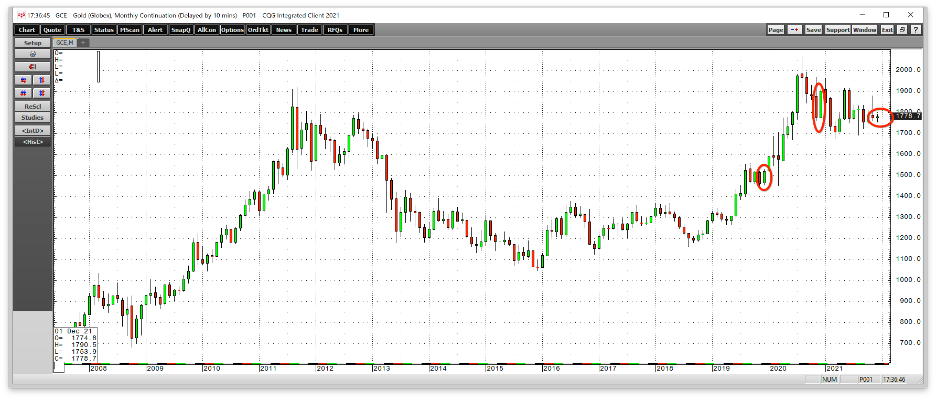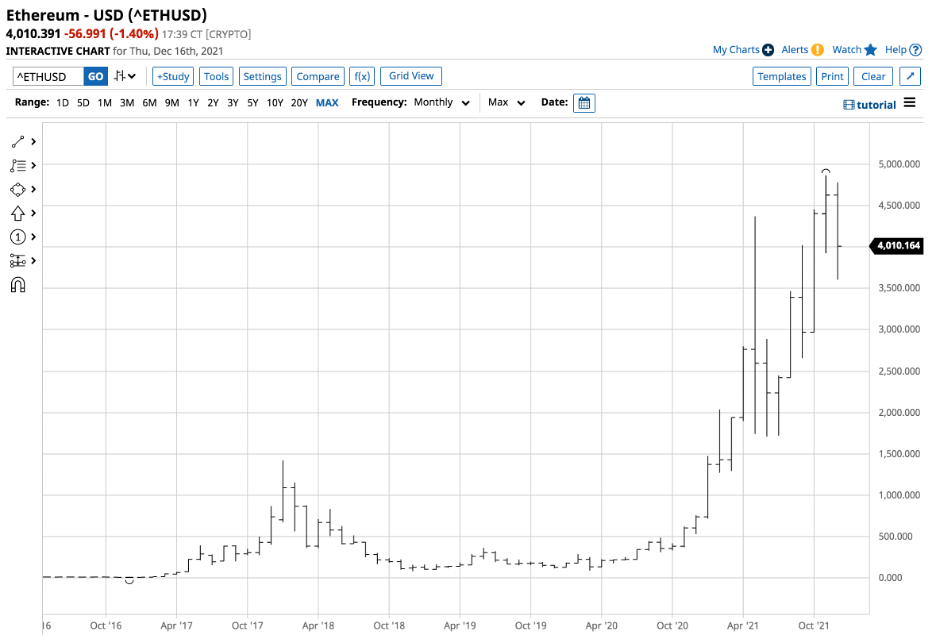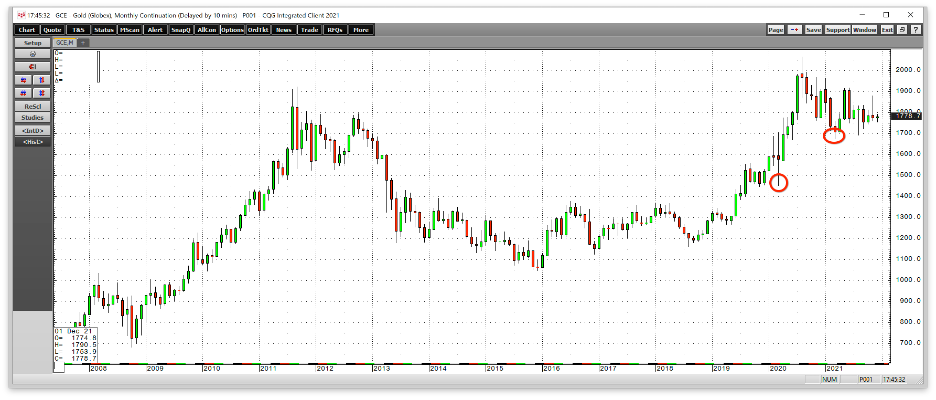This article was written exclusively for Investing.com
- 2020 was a golden year - 2021 was a dud
- Gold took a backseat to cryptos
- Gold underperformed other commodities
- Three reasons why 2022 could be a more precious year for the metal
- The challenges for gold over the coming year
Gold has been used as a means of exchange and a store and symbol of wealth since before biblical times. Gold is a hybrid as it is a metal and a currency. Along with its properties that make for many industrial uses, gold is the ultimate currency. Central banks, governments, and monetary authorities worldwide validate gold’s role in the financial system as they hold the metal as an integral part of their foreign exchange reserves. Over the past years, they have added to their holdings.
Gold’s price hit rock bottom in the late 1900s when the Bank of England auctioned off a substantial portion of the UK’s gold reserves. The auctions that began in 1999 pushed gold to a low of $252.50 per ounce in 1999 and $255 in 2011 on the nearby COMEX futures contract. Since then, gold’s price has soared, reaching an all-time high in virtually all world currencies in 2019-2020.
While 2020 was a banner year for the gold market, 2021 was a dud. As we head into 2022 in a few short weeks, the precious metal’s price was sitting at the $1780 level, over seven times higher than the 1999 low, but $283 below the 2020 high.
2020 was a golden year - 2021 was a dud
Gold traded in a wide $612.10 range in 2020, with the market reaching a low of $1450.90 in March 2020 and a high of $2063 on the continuous COMEX futures contract.
Source: CQG
The chart highlights nearby COMEX gold futures settled at $1520.00 on Dec. 31, 2019, and moved 25.1% higher to $1901.60 per ounce on Dec. 31, 2020. After a golden 2020, 2021 has been a corrective year, with the price at the $1778.70 level on Dec. 15, a decline of 6.5%.
Gold took a backseat to cryptos
Gold faded into the shadows in 2021 as other commodities, the stock market, and cryptocurrencies posted substantial gains. Even after the most recent selloffs from record highs, the two leading cryptocurrencies have returned impressive gains in 2021.
Source: Barchart
As the chart shows, Bitcoin closed at $28,986.74 on Dec. 31, 2020, and was at the $48,808.07 level on Dec. 15, an over 68% gain.
Source: Barchart
Ethereum, the second leading cryptocurrency, moved from $738.912 on Dec. 31, 2020, to $4,010.391 on Dec.15, 2021. At over five times higher, Ethereum outperformed Bitcoin, and both cryptos far surpassed gold as a store of value and growth asset in 2021.
Gold underperformed other commodities
As of Dec. 15, gold and the other precious metals did not keep pace with many other of the leader commodities in 2021:
Some of the other leading commodity markets had a far better year in 2021:
- Crude oil was 48% higher
- Natural gas was 50% higher
- Copper moved 20.8% higher
- Corn was up 20.7%
- Wheat gained 17.8%
- Sugar was 24.1% higher
- Coffee moved 86% higher
Precious metals lost their shine in 2021 after a bullish 2020. Meanwhile, gold was the first commodity to rise to a new all-time high in 2020. The gold market corrected, consolidated, and digested the previous year’s gains this year.
3 reasons why 2022 could be a more precious year for the metal
Bull market corrections can be nasty, shaking the confidence of even the most committed bulls. Three factors support gold as we head into 2022 in the coming weeks:
- Inflation is raging, and the central banks are behind the curve in addressing the economic condition. Gold tends to do well during an inflationary spiral.
- Central banks and governments continue to be net buyers of gold, adding to reserves. The official sector validates gold’s role in the global financial system as they hold the metal as an integral part of foreign exchange reserves.
- Every significant correction in gold has been a buying opportunity this century. Gold hit bottom in 1999 when the UK sold half its reserves. Since trading at the $252.50 level in August 1999, gold has made higher lows and higher highs.
At the $1780 level on Dec. 15, gold may be down on the year, but it is certainly not out. The yellow metal is closer to the highs than the lows this century. It remains far above its technical support level from a long-term technical perspective. 
Source: CQG
Medium-term technical support stands at the March 2021 $1673.30 low. However, the critical support level is at the March 2020 $1450.90 level. The midpoint of the March 2020 low and the August 2020 high is at $1756.95 per ounce, below the price on Dec. 15.
The challenges for gold over the coming year
Rising interest rates and a strong US dollar pose the most significant challenges for gold and other precious metals as we head into 2020. The Fed told markets it will accelerate tapering its quantitative easing program, which is bullish for the US currency. The kneejerk reaction was to sell gold as it costs more to carry the yellow metal, and it will rise in other currency terms as the dollar strengthens. However, two factors could cause an opposite reaction:
- Real interest rates are nominal rates minus inflation. Real US interest rates remain in negative territory at the most recent 6.8% CPI reading.
- The dollar’s rise is a mirage as all fiat currencies are losing value. The currency markets only measure the foreign exchange instruments against each other. When considering purchasing power, inflation erodes all currency, including the dollar’s, values.
I am bullish on gold going into 2022. A move below the $1450.90 level would alter that view from a technical perspective. Gold has been a means of exchange since before biblical times and cryptos have been around for a little over one decade. While the burgeoning asset class has provided incredible rewards, the world’s governments are not fans as they pose a threat to control of the global money supply, a critical factor for power.
Moreover, while monetary policy is set to tighten, the trillions in liquidity and fiscal stimulus since early 2020 make addressing inflation more than a challenge. Gold may sell off as the Fed becomes even more hawkish, but I believe lower prices will create a golden buying opportunity for the future. Gold is out of favor with investors and traders in late 2021, which could be the perfect reason for a rally in 2022 and beyond. Gold’s range was $612.10 in 2020; in 2021, it was $289.20, making it an inside year of price consolidation.
